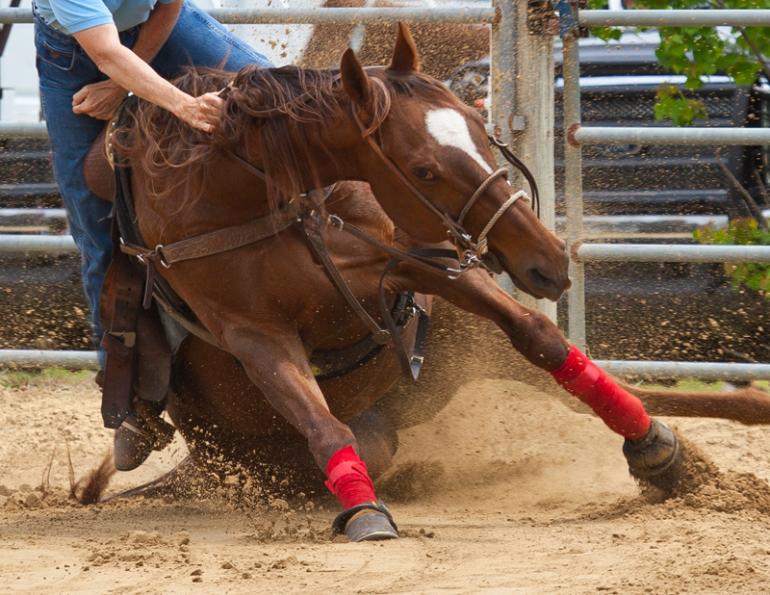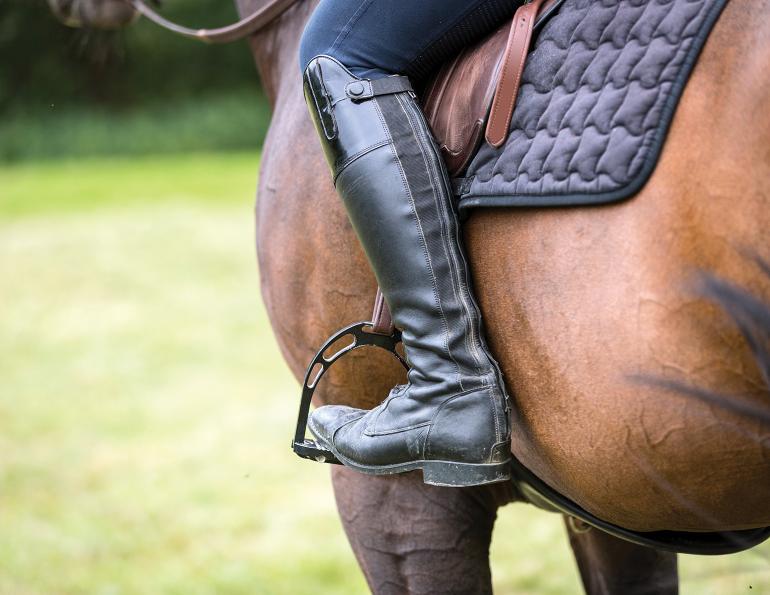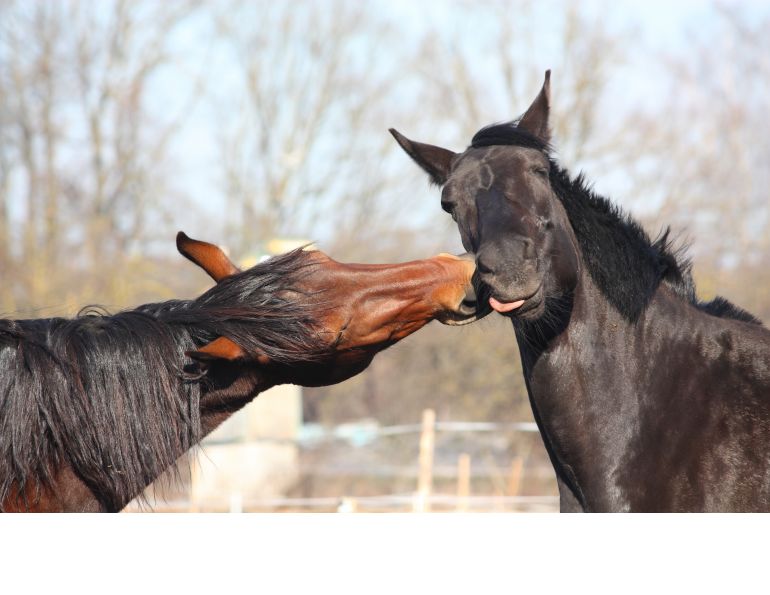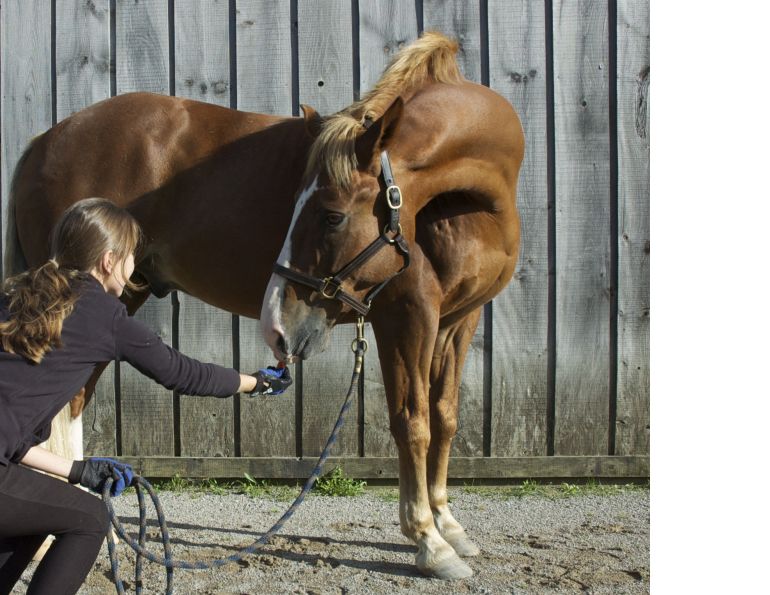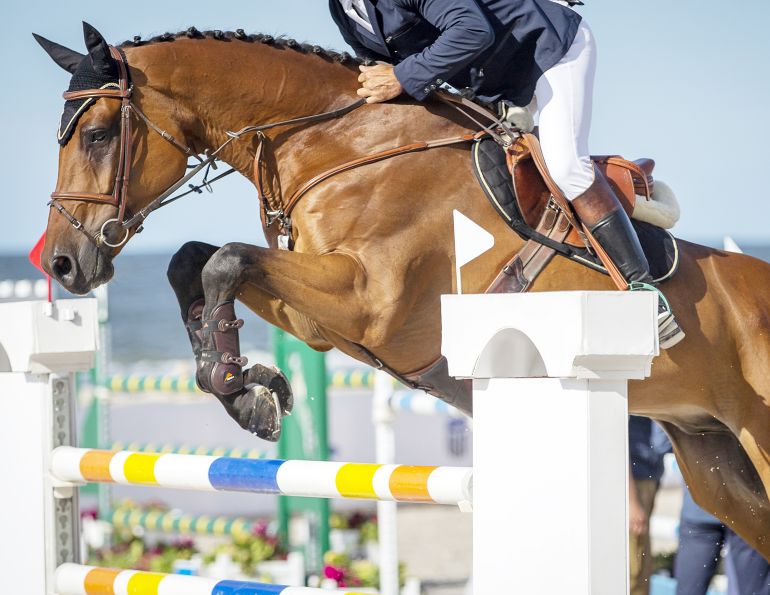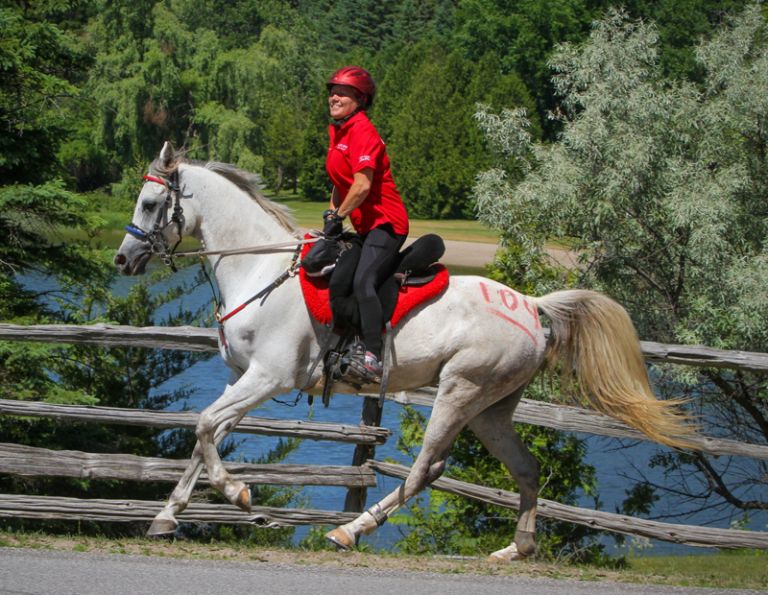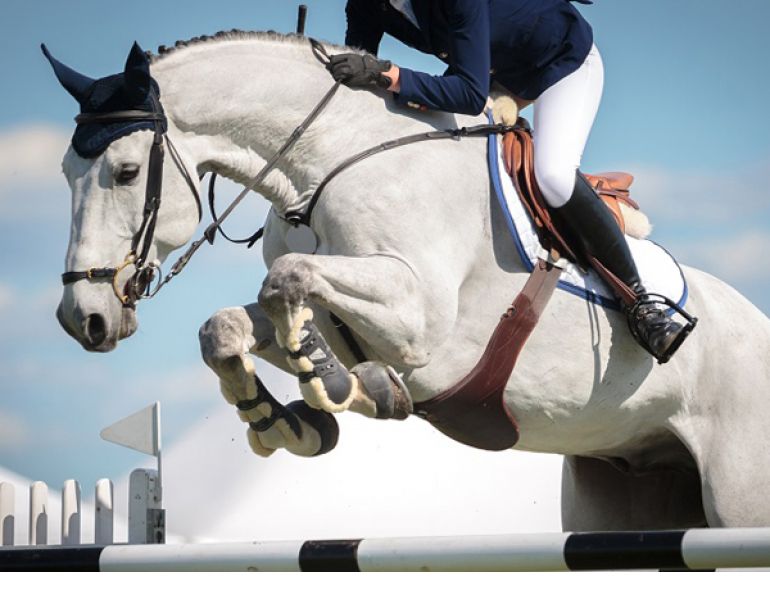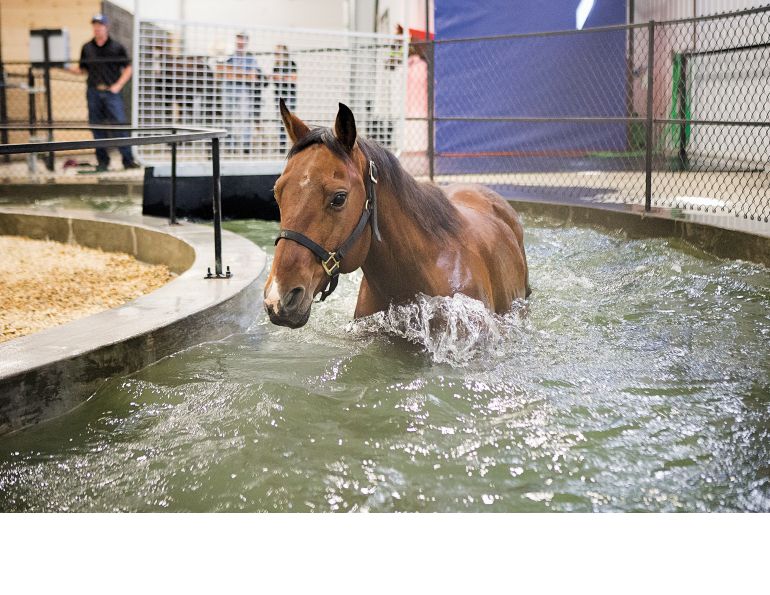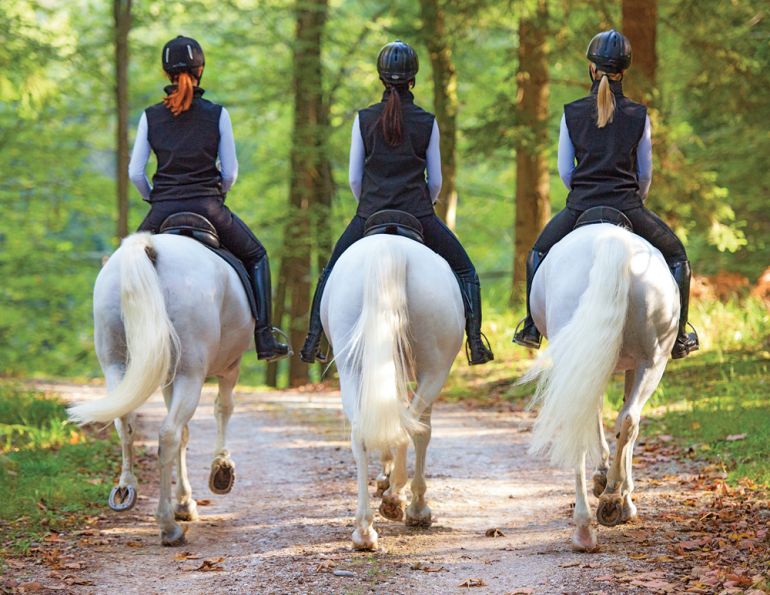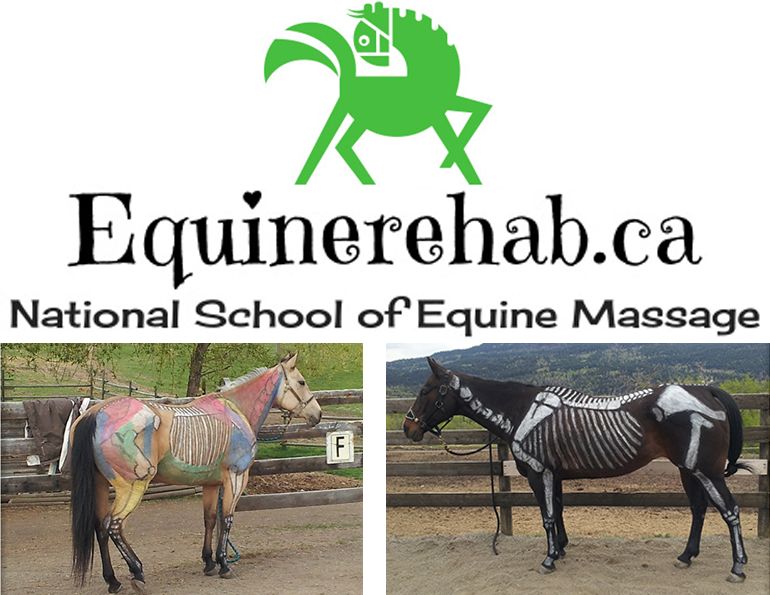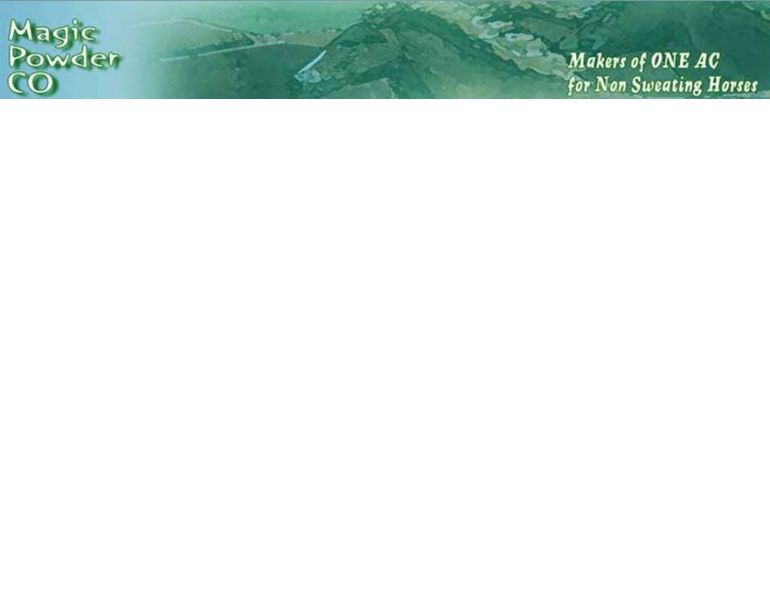A guide to supporting our horses and ourselves through injury and physical trauma.
By Alexa Linton, Equine Sports Therapist
If you’ve been involved with horses for even a little while, you know the following statements to be true: Horses hurt themselves. Riders hurt themselves. Horses hurt riders. And riders can hurt horses.
In fact, it is rare to meet a horse or a horse person who hasn’t injured themselves somewhere along the line. Some horses are comically accident-prone, with a cringeworthy track record for hurting themselves. If you own one of these horses you know exactly what I mean, and probably have a tack trunk packed to the brim with bandages, Bute, and a variety of wound cleansers.
Since many of our horses have had homes and injuries before we met them, it can be hard to know exactly what has occurred when we see their obvious scars or marks. We find ourselves trying to solve a mystery and asking questions like these: Why does my horse react when I touch this exact part of his leg? Why is he so weird about me touching his face or ears? How did he get that big scar?
Then there is the human side of trauma related to horses. I have rarely met a horse lover who has not experienced some sort of traumatic incident related to horses. Personally, I can think back to the time I fell onto a jump; the hundreds of times I’ve been stepped on; the time I was stepped on and then dragged down by the road by my middle finger (that cast was a funny one). I’m sure each of us can think back to at least one event involving horses that caused us to experience physical trauma of some kind. We can be left with scars, pain, lowered mobility, and for some of us, fear.
Related: How Horses and Humans Learn, Adapt, and Grow

Some horses tend to be accident-prone, and hurt themselves on a regular basis. Photo: Shutterstock/Robynrg
If an injury or trauma is purely physical with no emotional charge, the recovery tends to be simpler and speedier. When a trauma is more complex with emotional components such as fear, grief, or anger, and involves an emotional connection like the one we have to our horses, it can often have a more long-term and far-reaching impact. This is why it’s important to understand how more complex trauma works, and how it can bridge the body, mind, and emotions in both humans and horses.
Thankfully for most of us and our horses, many of these things heal up with time and attention, although injuries may leave us with scars, bruises, discomfort, or lowered mobility. This is good news for those of us who have accident-prone horses. But when time does not heal all wounds, what can we do to support ourselves and our horses through injury and trauma?
Scars and Adhesions
If every scar created issues for our horses we’d be in trouble! I find new scars on my mare every week because she lives out on pasture with a herd. If you have an accident-prone horse this will sound familiar. But every now and then a scar will have wide-reaching and long-term consequences, such as reduced mobility, discomfort, and restricted circulation. In osteopathic thinking, this type of scar is a top priority because it creates a false fulcrum or anchor of adhered scar tissue, which can pull on the tissues in harmful ways that force the body into compensatory patterns. With this type of scar, some sort of body work with a practitioner specializing in the breakdown of scar tissue is strongly recommended. To avoid nasty, poorly healing scars, be sure to get a veterinarian out as soon as possible if stitches or treatment are required.
Bone Misalignments, Bruises or Breaks
The body is a miracle, able to recover from pretty much anything. However, with trauma at the level of the bone there is a good chance that we will have small but noticeable long-term changes in mobility, strength, and levels of comfort if we don’t take this type of injury seriously. This can be true for bone breaks or bruises that impact the integrity of the bone. After x-rays and the acute healing stage are complete, support for return of bony integrity may lie in chiropractic, manual or osteopathic therapy, supplements, herbs, or wraps designed to improve circulation. Ensuring vitamins and minerals are at healthy levels with the help of your vet or doctor can also aid in optimal healing. An impact or change at the level of the cranial bones may require specific cranial work as explained in my previous article Demystifying the Cranial Bones.
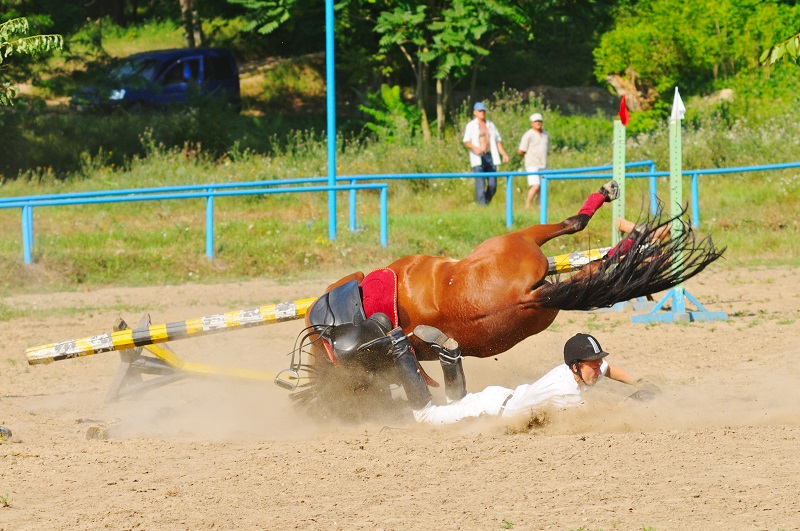
Almost every horse person has had a traumatic experience related to horses. Recovery is faster if the trauma is physical only, but when the experience has emotional components such as fear, anger, or grief the impact can be long-term. Photo: Shutterstock/Pirita
Muscle and Ligament Strains and Sprains
Ouch! These are perhaps the most common injuries in our horses and ourselves – an over-stretch of a muscle here, a little tweak of a ligament there. Muscle recovery is relatively speedy, but ligaments can take up to a year to fully recover. With these injuries, strength and amount of movement are often at play, with horses that are consistently moving on uneven surfaces over larger areas building strength in the hundreds of muscles and ligaments of the body. Varying your workout routine by adding hills, uneven surfaces, obstacles, and movements slightly outside the norm can effectively increase tissue strength, flexibility, circulation, and body autonomy, and reduce the chance of small tissue injury. If your horse is prone to sprains and strains, regular work with a manual therapist is recommended to reduce tension, remove compensations, and increase flexibility and body awareness.
Related: Happy Hips for Horse & Rider
More complex trauma is experienced when a physical injury or trauma is paired with emotion and fear, and is often of a repetitive nature. To understand how this type of trauma works, we need to start at the level of the limbic brain: at the amygdala responsible for emotions and actions related to survival. In potentially threatening situations, the amygdala activates the release of hormones associated with stress, increases reactions, and applies emotional charge to memories, especially traumatic memories. If you’ve ever met a horse that spooks when you wear a particular hat, you have experienced the workings of the amygdala firsthand. We see the impact of complex trauma most commonly in horses or humans who have experienced emotionally charged stressors repeatedly, because the amygdala immediately resources these past experiences and perceives the current similar experience as a very real threat.
Nestled beside the amygdala is the hippocampus, responsible for the organization and storage of our memories, as in the conversion of short-term pertinent memories to long-term stored memories. With trauma this conversion process is disrupted, causing traumatic memories to remain unintegrated and activated. This means that complex trauma is something we may be working with for a lifetime, and it requires a specific level of care.

When a horse has a trauma-based fear response and overreacts to something that should be routine, help him by fostering a sense of trust and safety in your partnership. Photo: Canstock/Michael Jung
As you might imagine, pushing through a trauma-based fear response in ourselves and our horses tends to make things worse, as we activate the amygdala and can cause the brain and body to shut down. Recognizing these signs in ourselves and our horses and meeting them with warmth and understanding can relax the brain and nervous system. If you are working with a horse that has a mysterious or challenging past, cultivating this sense of safety in your partnership can open the doors to positive shifts and restored trust. In these cases, it is strongly recommended to work with a team, an animal communicator, or a therapist who sees the world through a trauma-informed lens.
Physical injury and trauma can be challenging, painful and scary, but with a well-informed team, attention, empathy, and an open and curious mind, a full recovery from most types of trauma is possible, and often brings more connection and trust to your equine partnership in the process.
Related: Understanding Equine Back Pain
Related: Equine Physiology & Fitness
Main photo: iStock/Denny35463



